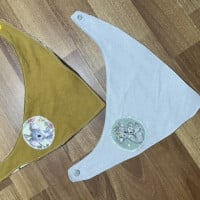Scoliosis is a three dimensional deformity of the spine, not just a lateral curvature of the spine.
There are three major types: neuromuscular, functional and idiopathic. Adolescent idiopathic scoliosis is the most common form of scoliosis I see in my clinic, but so many adults have scoliosis too.
What are the signs your child might have scoliosis?
1. Family history
It’s really important not to overlook other possible signs of scoliosis if someone in your family has it. make your doctor aware of it, and ensure they take your concerns seriously. Research has shown that scoliosis is 30% more likely to occur if someone else has been diagnosed.
2. Visual indicators
Sometimes scoliosis can be visible in your little ones, these may include but aren’t limited to:
- uneven posture
- one hip more pronounced
- a protruding shoulder blade
- one leg shorter than the other
- the body leaning to the side inexplicably
3. Ill-fitting clothing
You may also notice that your child’s clothing just doesn’t look quite right. A skirt may be slightly longer on one side than the other, a neckline might not centre the way it should. This could indicate your child has scoliosis, and is worth mentioning to your doctor.
4. Pain
Scoliosis can be difficult to diagnose early because the symptoms can be extremely mild until the condition becomes severe and requires surgery or bracing. Scoliosis sufferers will rarely report chronic or ongoing back pain until their curve becomes more severe. Irrespective, any unexplained or persistent pain in children could be a sign they have scoliosis.
5. Excess fatigue
Any fatigue occurring after long periods of sitting or standing might also be a symptom of scoliosis. The back muscles work harder than usual to keep the body balanced, and as such, will become fatigued sooner.
Unfortunately, there seems to be a misunderstanding whereby ‘mild scoliosis’ is often dismissed and can easily progress to a situation where bracing or even surgery is required. I have heard even health professionals say things like ‘everyone has scoliosis’, as if to undermine the importance of the potential impact of such a curve. This made me dig deeper to find out more about what can be done to help slow down or even halt curve progression.
That’s where the Schroth Method of physiotherapy comes into play.
What is Schroth?
The Schroth Method for scoliosis is a conservative exercise approach to treating scoliosis. It involves a three-dimensional approach to elongate the trunk and correct the imbalances of the spine. To be able to do this the therapist needs to be able to assess and examine the patient and X-rays* to devise the treatment plan.
The goal of treatment is to strengthen the inner muscles of the rib cage in order to change the shape of the trunk and any spinal abnormalities. This involves the therapist instructing the patient in specific exercises to straight, centralise and de-rotate the spine with corrective breathing techniques. It’s specialised treatment, not your ordinary back care.
Does it work?
If you look critically at the body of available evidence, Schroth therapy, when done with the right therapist and the right patient, can change the chance of curve progression. Even groups like the Scoliosis Research Society are now embracing Schroth as part of therapy for scoliosis patients. The International Society of Scoliosis Orthopaedic and Rehabilitation Treatment (SOSORT) already support the use of Schroth for scoliosis.
The aims of Schroth physiotherapy include:
- Improving postural alignment
- Improving posture during activities of daily living
- Promoting corrections
- Enhancing neuromuscular control
- Increasing muscle strength and endurance
- Pain reduction
- Improved cardiopulmonary function.
Who would benefit from the Schroth Method?
The treatment approach can be used to treat scoliosis patients of all ages, and can be used during all stages of scoliosis including before and after surgery. Once the patient is assessed, I use international guidelines developed by SOSORT, best practice and clinical judgement to make recommendations on the therapy and course of action required. I also liaise with the spine specialist involved, to ensure the best outcome for each patient.
How long does therapy last?
Each person has an individual plan. Typically sessions are 60 minutes in length and are held frequently in the first eight weeks. If all is going well and the patient is improving with their postural corrections then frequency or duration of treatment may be reduced. Continuation of your home exercise program is a lifetime commitment and is vital in order to maintain your postural corrections. Re-evaluations are recommended and advised on a per patient basis depending on their individual circumstances.
Do you know someone who has been diagnosed with scoliosis? Share with us in the comments.





















5:54 pm
5:26 pm
5:02 pm
3:07 pm
12:42 pm
- «
- 1
- 2
Post a commentTo post a review/comment please join us or login so we can allocate your points.